
27-04-2020 17:38
 Petersen Jens H.
Petersen Jens H.
Sorry to request a basidio-work, but does anyone h

23-04-2020 20:26
 Chris Yeates
Chris Yeates
Bonsoir tous On incubated (14.5 weeks) dung of mo

28-04-2020 02:02
Valencia Lopez Francisco JavierHola a tod@sAdjunto fotos macro/micro de una supue

27-04-2020 20:25
 Yannick Mourgues
Yannick Mourgues
Trouvé sur de la paille. Conidiospores 11,2-12,6
Pyrenopeziza
Guy Buddy,
29-04-2020 18:52
I found these fruits on dead stems of Hydrangea arborescens in Pennsylvania, USA. Apothecia when fully opened 1-2mm. Spores in H20 measure (8.7) 11.6 - 15.6 (16.2) × (2.1) 2.3 - 3.2 (3.5) µm, Q = (3.7) 3.8 - 5.7 (6.6) ; N = 15, Me = 13.4 × 2.7 µm ; Qe = 4.9. Spores obovoid, aseptate even in the ascus, smooth. Asci measure ~50-60 x 9-10 um. IKI + blue. Paraphyses filiform. Hairs on outside appear smooth.
I was thinking maybe P. fracta, which has been reported on Hydrangea before, spore size and shape match, but I am not sure.
Best,
Devin
Hans-Otto Baral,
29-04-2020 20:36

Re : Pyrenopeziza
This sounds a reasonable ID. Do you have literature which gives a spore size? Perhaps Seaver? The old authors don't give but mention the oblong clavate spore shape. I dod not hear of this species so far.
Guy Buddy,
30-04-2020 00:38
Re : Pyrenopeziza
Hey Hans,
P. fracta was from Linnean Society of London, 1904 that I pulled from Google. I am not confident on that and the name might be outdated or not even valid. I dont have much literature on this genus except Gremmen 1958, which depending on if "the receptical is verrucose or hairy" keys me out to Section 1, subsection b or Section 7 Trichantina, which includes P. escharodes. E. Rubio's micrographs of escharodes compares to what I am seeing with my specimen, thats as far as I have gotten.
Devin
P. fracta was from Linnean Society of London, 1904 that I pulled from Google. I am not confident on that and the name might be outdated or not even valid. I dont have much literature on this genus except Gremmen 1958, which depending on if "the receptical is verrucose or hairy" keys me out to Section 1, subsection b or Section 7 Trichantina, which includes P. escharodes. E. Rubio's micrographs of escharodes compares to what I am seeing with my specimen, thats as far as I have gotten.
Devin
Hans-Otto Baral,
30-04-2020 10:06

Re : Pyrenopeziza
Oh yes, I see. So you have larger spores, maybe because they are alive.
The spores are larger than in P. escharodes. I suppose when you repeatedly collect this species on Hydrangea and it has always such large spores, it would be a hint on a good species. Otherwise only DNA will help to clarify this taxon.
Zotto

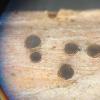
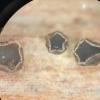

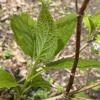
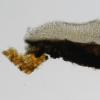
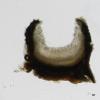
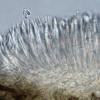
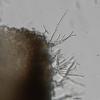
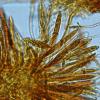
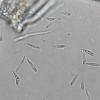
 3C9DCC10-E86A-4EC5-A271-50B2F0010C53-0001.jpeg
3C9DCC10-E86A-4EC5-A271-50B2F0010C53-0001.jpeg